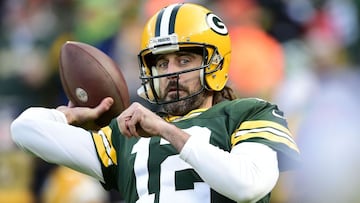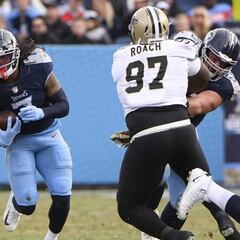How does the NFL pay cap work?
NFL stardom can bring in the big bucks, but the league’s salary cap makes sure that even for the superstars, the sky is not exactly the limit.


The gigantic paychecks of the biggest NFL players hog the headlines, but the salary cap makes sure that even for the brightest stars, the sky is not exactly the limit.
The NFL salary cap is the grand total that a team can spend on all their players combined within a given year. This is one way to make sure that the richest teams cannot woo all the best players with unlimited amounts of money.
NFL 2021 salary cap
The NFL pay cap for the 2021 season is $182.5 million, a significant drop from 2020’s $198.2 million. All 32 teams have to comply with this maximum amount.
The NFL reduced its salary cap from last season by 8%, an anticipated decline based on lost revenue during the pandemic. Teams will be allowed to spend $182.5 million in 2021 on player payroll. https://t.co/2CUvTJ40UQ
— The New York Times (@nytimes) March 10, 2021
The teams are limited in the money they can give to their highest paid players, as they need to pay other players at least the minimum wage as dictated by the NFL’s Collective Bargaining Agreement with the NFL Players’ Association.
The cap takes into account various components of contracts, such as players’ base salaries and different kinds of bonuses. Teams can adjust these elements accordingly so as avoid going over the limit.
Each player’s total is known as his total cap hit. The player with the largest cap hit for 2021 is Atlanta Falcons quarterback Matt Ryan at $40.9 million, counted against Atlanta’s salary cap.
Other NFL stories:
- The NFL playoff picture after Week 10 of the regular season
- What football teams have gone undefeated in NFL history?
- How did the Tampa Bay Buccaneers get their name?
Dealing with 'dead money'
Aside from taking into account the players’ pay, teams also need to minimize the amount of dead money they have to work with, as this sum also counts towards the salary cap.
Dead money refers to the amount that is allotted to players who are no longer with the team, either because they were released from the roster or traded to another team.
Eagles now take on the largest dead money cap hit in NFL history by trading Carson Wentz: $33.8 million.
— Art Stapleton (@art_stapleton) February 18, 2021
To illustrate, let’s say a player signs a five-year contract with $10 million guaranteed money divided into $2 million payments per year. After two years and $4 million in pay, the player is assessed to be underperforming and is released. He is given the remaining guaranteed $6 million, and this amount will still be counted against the team’s salary cap for the remaining three years as if that player were still with the team.
Strict upper limit
The NFL implements what is known as a “hard cap”. As the term implies, the limit is strict and cannot be exceeded by any team.
The NFL informed clubs they won't be allowed to borrow cap room from future years to help them in 2021 under Article 11, Section 2 of the CBA, per sources.
— Tom Pelissero (@TomPelissero) March 10, 2021
So, it's a hard $182.5 million salary cap, though obviously teams have carryover and various mechanisms to clear space.
Related stories
Other professional sports groups may have more malleable limits, such as the NBA, where teams are able to go beyond the maximum account and are simply penalized for doing this with more taxes.
NFL Teams hardly ever go beyond the pay cap, but in case they do, the league can punish them by way of implementing steep fines or taking away draft picks.

